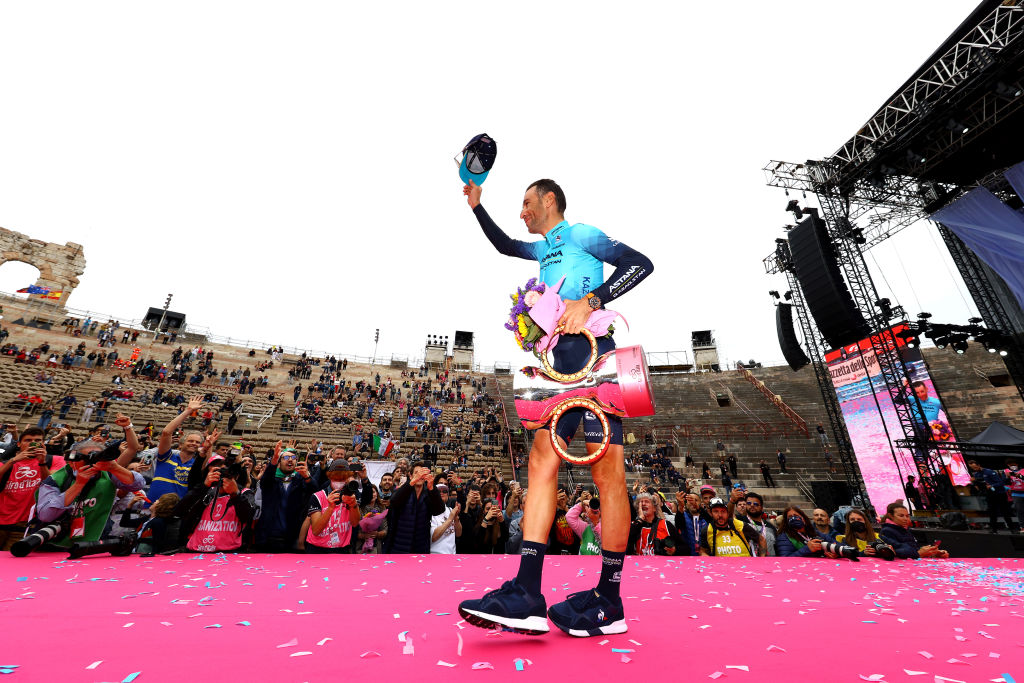Organisers prioritise safety in neutralising men's Dwars door Vlaanderen
Emergency services called on course after crashes in women's race
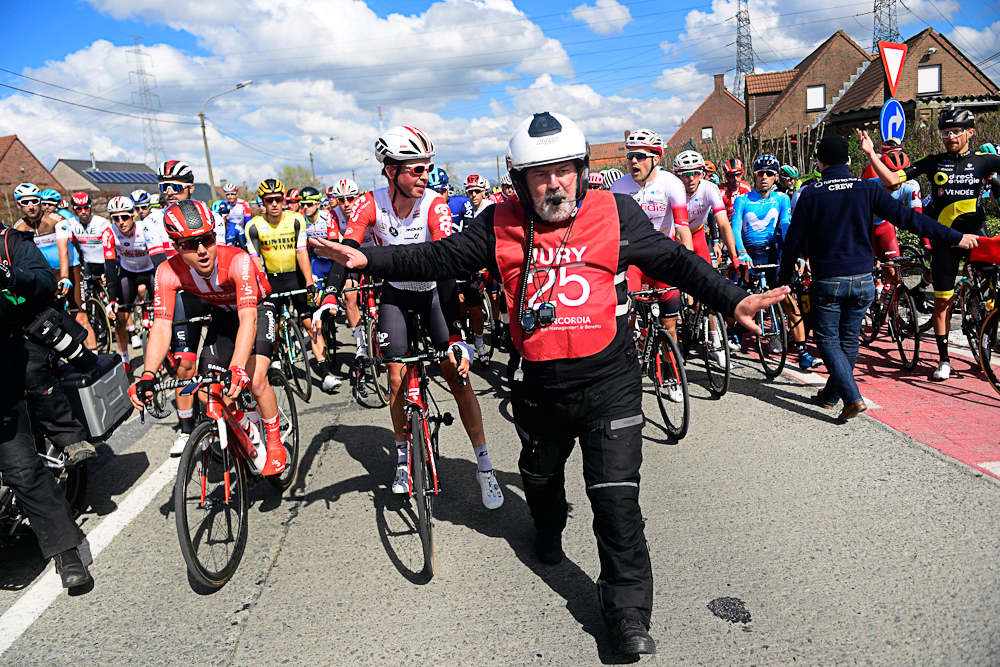
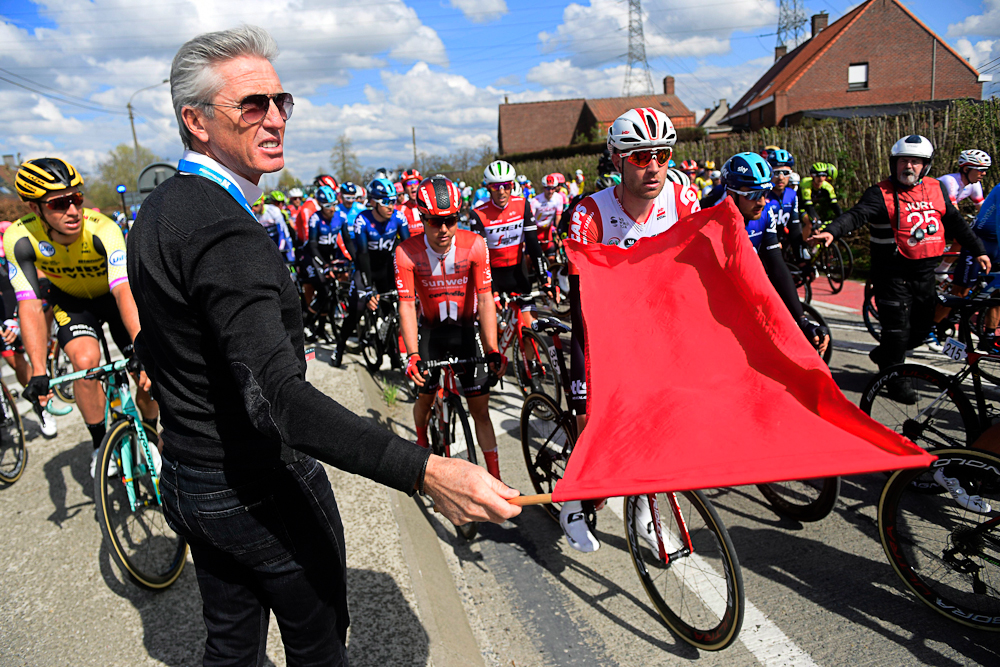
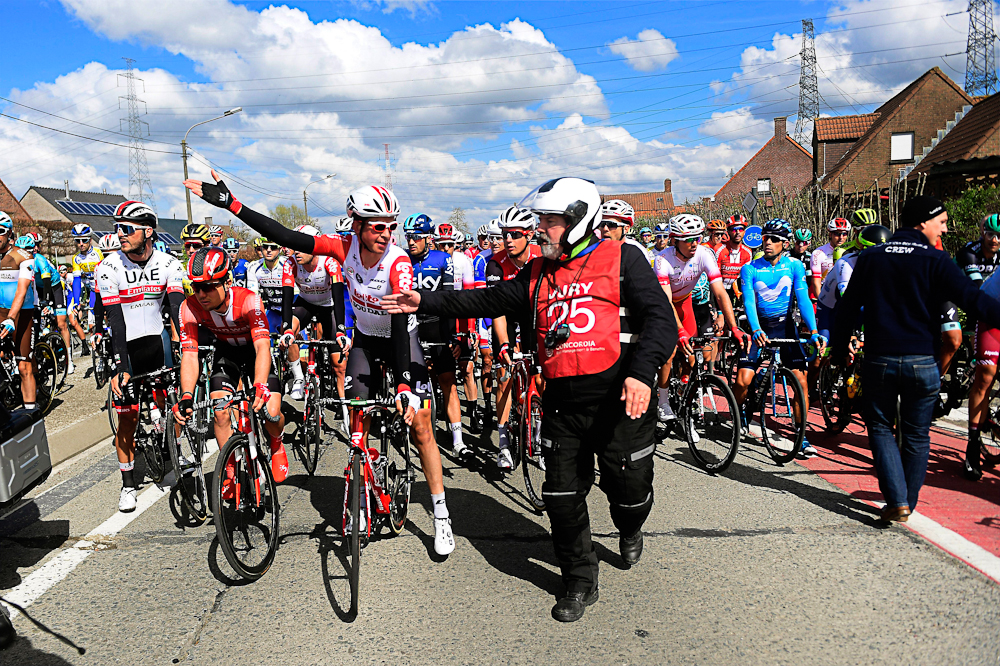
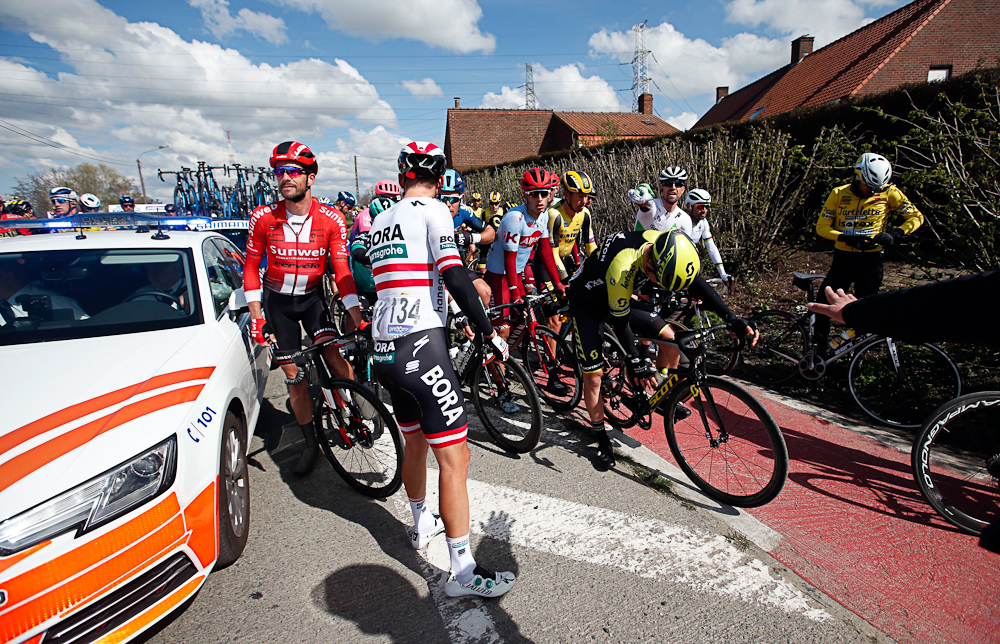
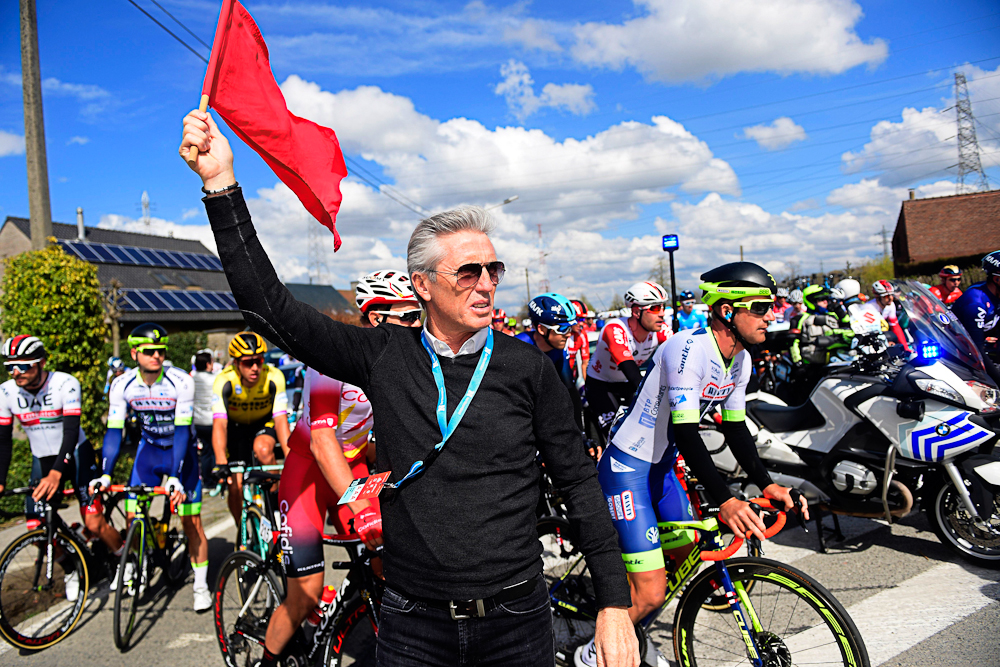
Dwars door Vlaanderen was thrown into temporary chaos as both the men's race and the women's race were neutralised, with the men stopping twice just beyond the halfway mark in order to allow ambulances through to treat victims of crashes in the women's race.
The eight-rider breakaway in the men's race was ordered to stop with 76 kilometres remaining, and the peloton was waved to a halt as they caught up. After almost 10 minutes, they got going again but organisers had failed to allow the original breakaway riders to set off first and re-establish their 2:15 advantage, and so the race was stopped again.
It became more farcical when, after the second restart, it emerged Lukas Postlberger (Bora-Hansgrohe) hadn’t got the memo, and the Austrian was forced to take a tow from a television motorbike to regain up his rightful place in the break.
The hold up occurred because both the men's and women's races used a same 15-kilometre section of the course, including the Kluisberg and Knokteberg climbs. While the men's race started out on the fastest-predicted time schedule, the women's race was well behind its slowest – having been held up by a string of early crashes – and the two were in the same area at the same time.
In the women’s race, a big crash after just 200 metres caused the race to be neutralised and restarted, and then two separate crashes after around 50 kilometres required two ambulances on the scene. As a result, the ambulances needed access to the stricken riders via the same roads the men's races was about to use on the approach to the Kluisberg.
At the finish in Waregem, former pro Scott Sunderland, who took up the role of general race director for Flanders Classics this year, explained what happened and how organisers handled the situation.
"At the start of the women's race we had quite a large crash after 200 metres, so the organisers decided to restart the women's race, so that created a bit of a delay. It got away OK, it was fine, then coming in the run-in to Kluisbergern there were two more crashes, close to one another, both needing ambulances to assist. In the second crash, the girl needed to be taken away by the ambulance," Sunderland said.
The latest race content, interviews, features, reviews and expert buying guides, direct to your inbox!
"Always in the race, anyone who's injured or when ambulances are coming into the race they always have priority over the race. That meant we needed to try and slow the men's race down, initially, then to neutralize it briefly for a few minutes, so we could clear any difficulties and so the ambulances could get away to the hospitals. What looked a bit chaotic ended up being quite quickly taken under control. It didn't affect at all the outcome of the women's race or the men's race.
"There was only a short period where the races cross, and it happened to be at this period where those two crashes happened in the women's race. Priority always go to safety, and so we needed to bring those ambulances in to make sure those women were able to be taken to hospital and be dealt with accordingly."
Although this may have simply been a case of circumstance and bad timing, this isn't the first time this season that the men's and women's fields have nearly collided at a race.
Earlier this year, officials at the Omloop Het Nieuwsblad – also run by Flanders Classics – were forced to neutralise the women's race when breakaway rider Nicole Hanselman (Bigla) nearly caught the back end of a slow-moving men's peloton. In the wake of that incident organisers faced criticism at having chosen to stop the women's race and not the men's.
"We're always looking at equality, looking at trying to develop women's racing – that's one of Flanders Classics' mandates and aspirations," Sunderland said. "The women's teams and riders do like to race on the same day as the men, of course, because there are a lot more crowds and a lot more press. That gives them lot of opportunity to enjoy what the men are getting – of course the crowds and some of the TV.
"We may have to relook at some of those things, but it's trying to fine-line it. We'll also take away some learnings on this and do some debriefs after this weekend and after the next races, assess those and look at how we go about it for 2020. But we're 100 per cent for developing and promoting women's cycling. We want to create equality and opportunities for women's racing as well as men’s."
